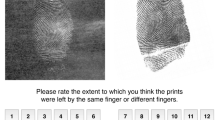Abstract
The implementation of quality systems in analytical laboratories has now, in general, been achieved. While this requirement significantly modified the way that the laboratories were run, it has also improved the quality of the results. The key idea is to use analytical procedures which produce results that fulfil the users’ needs and actually help when making decisions. This paper presents the implications of quality systems on the conception and development of an analytical procedure. It introduces the concept of the lifecycle of a method as a model that can be used to organize the selection, development, validation and routine application of a method. It underlines the importance of method validation, and presents a recent approach based on the accuracy profile to illustrate how validation must be fully integrated into the basic design of the method. Thanks to the β-expectation tolerance interval introduced by Mee (Technometrics (1984) 26(3):251–253), it is possible to unambiguously demonstrate the fitness for purpose of a new method. Remembering that it is also a requirement for accredited laboratories to express the measurement uncertainty, the authors show that uncertainty can be easily related to the trueness and precision of the data collected when building the method accuracy profile.







Similar content being viewed by others
References
ISO/IEC 17025 (2000) General requirements for the competence of testing and calibration laboratories. ISO, Geneva
UK Department of Trade and Industry (1998) Manager’s guide to VAM, valid analytical measurement programme. LGC, Teddington, UK http://www.vam.org.uk
EURACHEM (1998) The fitness for purpose of analytical methods: a laboratory guide to method validation and related topics, 1st edn. EURACHEM, Budapesthttp://www.eurachem.bam.de
Food and Drug Administration (1995) International conference on harmonization, definitions and terminology, Q2A. Federal Register 60:11260–11262
Caporal-Gautier J, Nivet JM, Algranti P, Guilloteau M, Histe M, Lallier M, N’guyen-Huu JJ, Russoto R (1992) Guide de validation analytique SFSTP. STP Pharma Prat 2:205–226
Chapuzet E, Mercier N, Bervoas-Martin S, Boulanger B, Chevalier P, Chiap P, Grandjean D, Hubert P, Lagorce P, Lallier M, Laparra MC, Laurentie M, Nivet JC (1997) Méthodes chromatographiques de dosage dans les milieux biologiques: stratégie de validation. STP Pharma Prat 7:169–194
Chapuzet E, Mercier N, Bervoas-Martin S, Boulanger B, Chevalier P, Chiap P, Grandjean D, Hubert P, Lagorce P, Lallier M, Laparra MC, Laurentie M, Nivet JC (1997) Méthodes chromatographiques de dosage dans les milieux biologiques: stratégie de validation, exemple d’application de la stratégie de validation. STP Pharma Prat 8:81–107
Boulanger B, Dewe W, Hubert P (2000) Objectives of pre-study validation and decision rules, AAPS conference. APQ Open Forum, Indianapolis, IN
Hubert P, Nguyen-Huu JJ, Boulanger B, Chapuzet E, Chiap P, Cohen N, Compagnon PA, Dewe W, Feinberg M, Lallier M, Laurentie M, Mercier N, Muzard G, Nivet C, Valat L (2003) Validation of quantitative analytical procedure, Harmonization of approaches. STP Pharma Prat 13:101–138
Shah VP, Midha KK, Dighe S, McGilveray I, Skelly JP, Yacobi A, Layloff T, Viswanathan CT, Cook CE, McDowall RD, Pittman KA (1992) J Pharm Sci 81:309–312
Food and Drug Administration (2001) Guidance for industry, bioanalytical methods validation. US Food and Drug Administration, Washington, DC, http://www.fda.gov/cder/guidance
Mee RW (1984) Technometrics 26(3):251–253
Satterthwaite FE (1946) Biometrics Bull 2:110–114
Hubert Ph, Chiap P, Crommen J, Boulanger B, Chapuzet E, Mercier N, Bervoas-Martin S, Chevalier P, Grandjean D, Lagorce P, Lallier M, Laparra MC, Laurentie M, Nivet JC (1999) Anal Chim Acta 391:135–148
Chiap P, Ceccato A, Miralles Buraglia B, Boulanger B, Hubert Ph, Crommen J (2001) J Pharm Biomed Anal 24:801–814
EURACHEM/CITAC (2000) Guide: quantifying uncertainty in analytical measurement, 2nd edn. EURACHEM/CITAC, Budapest, http://www.eurachem.ul.pt
Ranson C (2001) Workshop on the experience with the implementation of ISO/IEC 17025, Eurachem-Eurolab, Paris, 4 October 2001
Feinberg M, Montamat M, Rivier C, Lalère B, Labarraque G (2002) Accred Qual Assur 7:409–411
ISO/DTS 21748 (2003) Guide to the use of repeatability, reproducibility and trueness estimates in measurement uncertainty estimation. ISO, Geneva
Author information
Authors and Affiliations
Corresponding author
Rights and permissions
About this article
Cite this article
Feinberg, M., Boulanger, B., Dewé, W. et al. New advances in method validation and measurement uncertainty aimed at improving the quality of chemical data. Anal Bioanal Chem 380, 502–514 (2004). https://doi.org/10.1007/s00216-004-2791-y
Received:
Revised:
Accepted:
Published:
Issue Date:
DOI: https://doi.org/10.1007/s00216-004-2791-y




